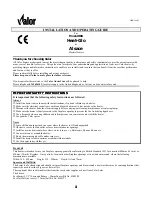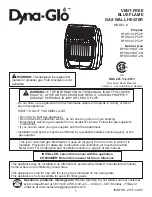
Tab.5 Fire prevention measures
Appropriate extinguishing agents
All extinguishing agents can be used
Inappropriate extinguishing agents
None to our knowledge. In the event of fire nearby, use
the appropriate extinguishing agents
Specific hazards
Rise in pressure: in the presence of air, an inflamma
ble mixture may form under certain temperature and
pressure conditions
Toxic and corrosive vapours may be released by the
effect of the heat
Special intervention methods
Cool the volumes exposed to heat with water spray
Protection of the firemen
Full self-contained breathing apparatus.
Complete body protection
Tab.6 In the event of accidental spillage
Individual precautions
Avoid contact with the skin and eyes.
Do not intervene without appropriate protective equipment.
Do not inhale the vapour
Evacuate the hazardous area.
Stop the leakage.
Eradicate all sources of ignition.
Ventilate the spillage area mechanically (risk of asphyxia)
Cleaning / Decontamination
Allow residual product to evaporate
Tab.7 Personal protective equipment
Respiratory protec
tion
If ventilation is insufficient: AX-type cartridge mask
In confined spaces: self-contained breathing apparatus
Hand protection
Protective gloves in leather or nitrile rubber
Eye protection
Safety glasses with side protection
Skin protection
Clothing made primarily of cotton
Industrial hygiene
Do not drink, eat or smoke at the place of work
Tab.8 Handling
Technical measures
Ventilation
Precautions to be tak
en
No smoking.
Prevent the build-up of electrostatic charges.
Work in a well ventilated place
Tab.9 Considerations on disposal
Disposal must be done in compliance with prevailing local and national regulations.
1 Safety
7647125 - v03 - 11092017
TWH Split WH
7








































